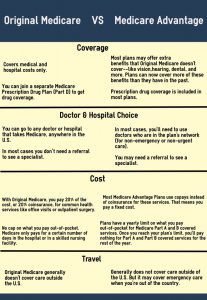Medicare Open Enrollment is the perfect opportunity for you to change plans and find ways to get more coverage and save money. Medicare Open Enrollment is also the perfect opportunity for scammers to try and steal your information. They know that you will be looking for the best coverage at this time, so they’ll jump on the chance to confuse, bait, or scare you. In order to protect yourself, you have to be aware of the most common scams and scamming tactics.
The Different Types of Scams
The most important thing you need to know is that, unless you request information from them, Medicare will not call you. You should treat any unsolicited calls from someone claiming to be with Medicare as suspicious; in fact, the majority of Medicare scams are phone calls. Here are scams to look out for:
- A call or recorded message from someone who claims to be helping you navigate your Medicare options. This person might claim that they are an advocate working on your behalf, and that they can enroll you in a better, cheaper Medicare plan if you give them some personal information. If you did not sign up for help, then this is a scammer trying to get your information.
- A call from someone claiming to be with Medicare who offers you promotional gifts.
- A call from someone claiming to be with Medicare who threatens to discontinue your insurance if you don’t re-enroll now.

If you suspect a scammer has contacted you, call 1-800-Medicare to report it.
What To Do
No one representing Medicare will ever contact you by phone, email, or in person unless you have already made contact with them. The best way to avoid any scam is to never give your Medicare ID number, Social Security number, health plan information, bank information, or any other personal information to someone that you don’t know.
If you do receive a call that is suspicious, then hang up and call 1-800-Medicare to report it. Then contact your Medicare agent, or Medicare, to make sure that there is nothing wrong with your current plan, and that there are no actions that you need to take.
Getting Trusted Help
Medicare Open Enrollment can be a very busy and overwhelming time. You are in the midst of figuring out if your current plan is right for you, and researching other plans in your area to try to save money and get the most coverage. On top of that, you have to worry about people trying to steal your information. You can protect yourself from the many scammers out there by knowing their scare tactics and the ways that they will pretend to help you. In addition, you can make sure that you are fully protected from identity theft or worse by contacting an EZ agent!
EZ.Insure uses state-of-the-art technology to protect your information when you fill out our online form. To further protect your information, we will only share it with one agent. Whether you want to know more about your Medicare options, sign up for a Medicare Supplement Plan, or simply compare plans, EZ’s got you covered. With us, you will never have to worry about outside parties getting their hands on your information. To start comparing quotes for free, enter your zip code in the bar above, or to speak directly to an agent, call 888-753-7207.















